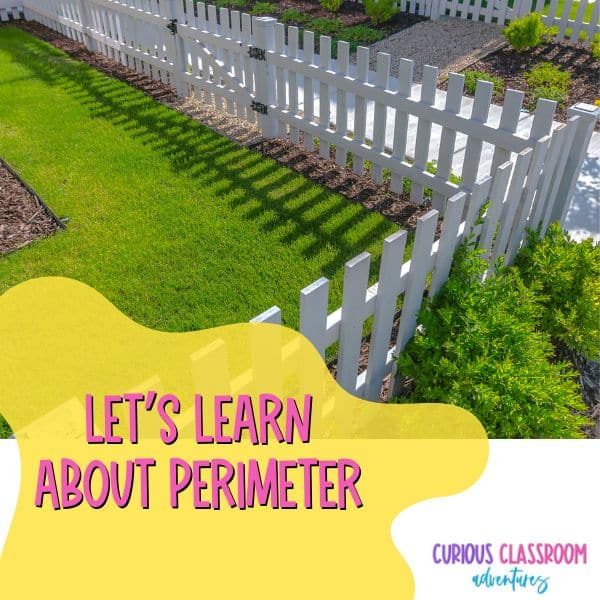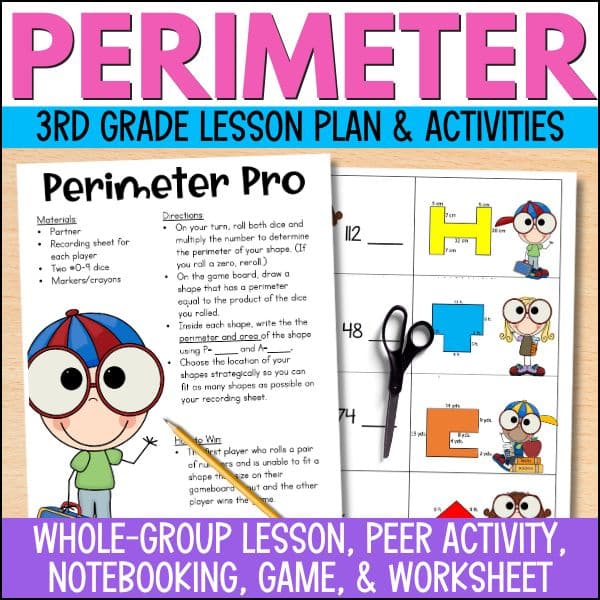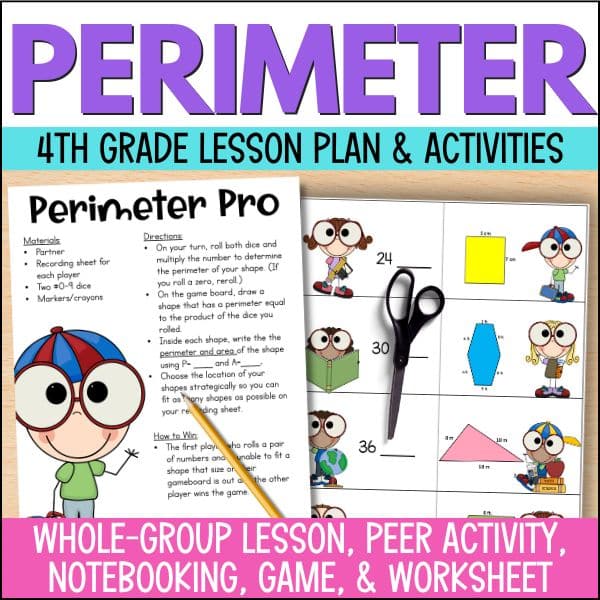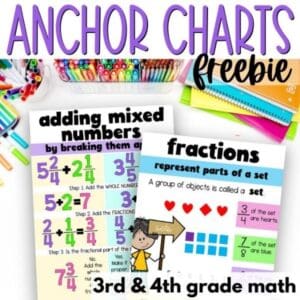Teaching perimeter of shapes can be a walk in the park… or maybe a stroll around a yard! It’s all about helping students see the practical side of math while having fun along the way. Whether you’re introducing this topic for the first time or looking for fresh ideas to reinforce it, these activities will get your students thinking (and moving!).
Start with the Basics: What’s Does Perimeter of Shapes Represent?
Begin by helping students visualize the concept of perimeter in math terms as the “fence” around a yard, while area represents the “grass” inside it. Sketch a simple rectangle and ask: “If this was your backyard, how would you measure the amount of fencing needed?” This visual comparison makes it easier for kids to understand the difference between perimeter and area.
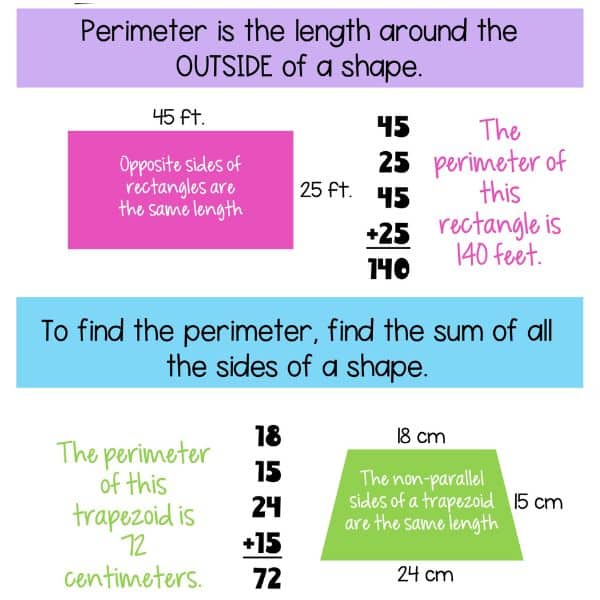
Add Up the Sides
Once students grasp the idea, show them how to calculate the perimeter of shapes by adding up the lengths of all the sides of a shape. Practice this with:
- Whole numbers.
- Fractions (e.g., a triangle with sides 2 1/2, 3 1/4, and 4 3/4 units).
- Decimals (e.g., a rectangle with sides 5.6 and 3.2 units).
To make it interactive, give students rulers and have them measure real-world objects in the classroom—desks, books, or bulletin boards—to calculate their perimeters.
Perimeter Pro: A Math Game
Who doesn’t love a little friendly competition? Try this game to make perimeter of shapes more engaging:
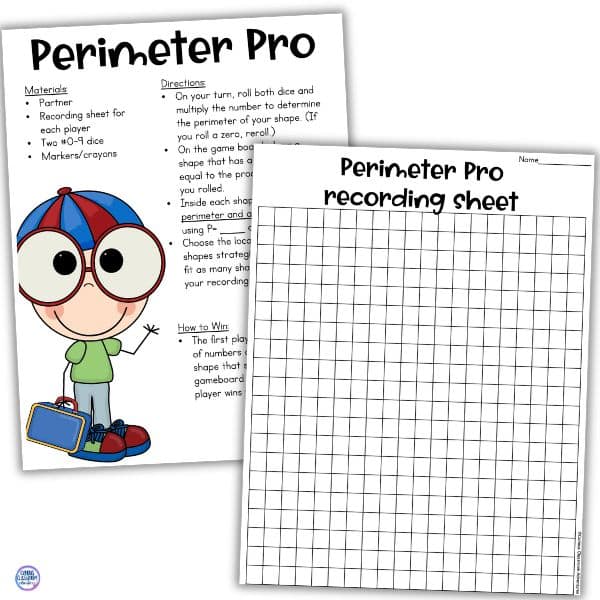
How to Play:
- Each player gets a piece of grid paper.
- On their turn, they roll two dice and multiply the numbers together. The product determines the perimeter of the shape they’ll draw.
- Using the grid paper, they draw a shape with the exact perimeter. (Encourage creativity—not all shapes need to be rectangles!)
- Inside the shape, they calculate and write both the perimeter (P=) and area (A=) to reinforce both concepts.
- Players strategically place their shapes on the grid to maximize space.
- The game ends when a player can no longer fit a shape on their grid paper. The player with the most shapes wins!
This activity helps students practice multiplication, spatial reasoning, area and perimeter calculation all in one.
This game is just one part of these done-for-you lesson plans for third or fourth grade. The main difference between the two lessons is the numbers used in calculation. The 3rd grade lesson only has students determine perimeter of shapes with whole numbers as the length of sides, whereas the 4th grade lesson incorporates fractions.
Integrate Real-World Applications
Extend learning by discussing where perimeter calculations might come up in real life. For example:
- Measuring the border of a garden.
- Planning a picture frame.
- Designing a track or walking path.
You could even assign a mini-project where students create a “blueprint” of their dream backyard, complete with fencing measurements for different areas.
Wrap It Up
Teaching perimeter of shapes opens your classroom to all sorts of fun and creative opportunities! By using visuals, hands-on activities, and games, you can turn this math concept into something your students will enjoy and remember. The key is keeping it interactive and relatable—and maybe throwing in a little friendly competition. So grab your dice and grid paper and get ready for some perimeter fun!
Get 4 Free Resources Every Month!
You read that right! I’ll share an easy-to-use and engaging upper elementary resource straight to your inbox every week along with a fabulous classroom idea or two to make teaching a little less work and a lot more fun!
Here’s the first freebie to get you started!

